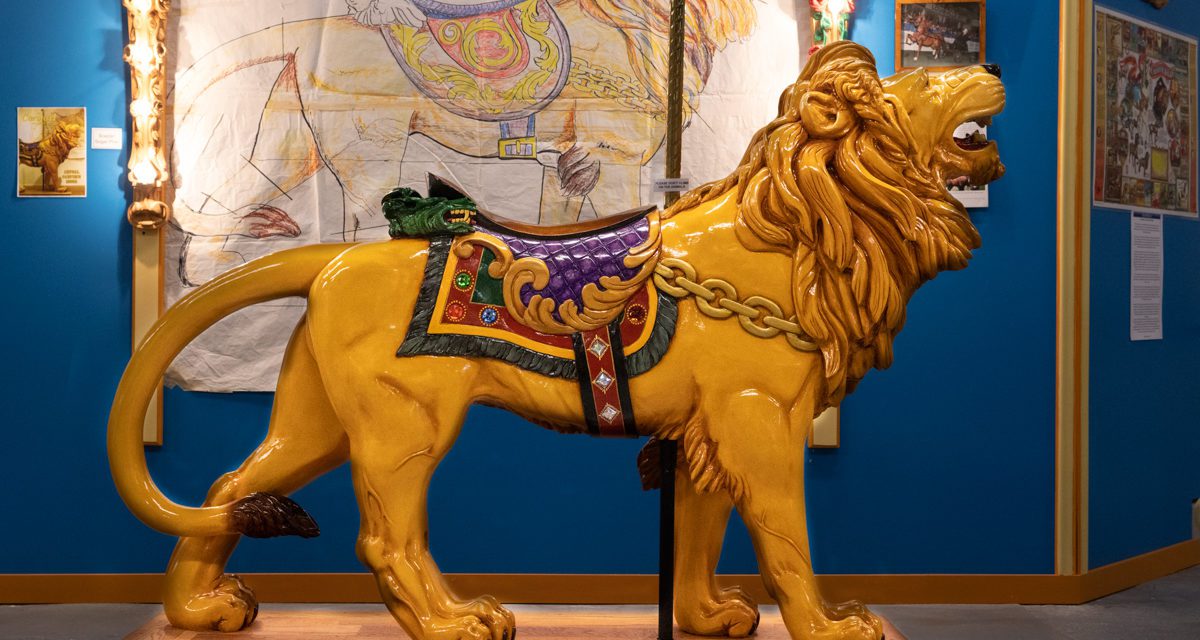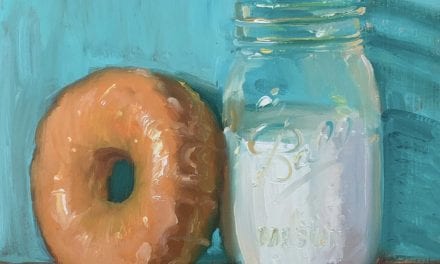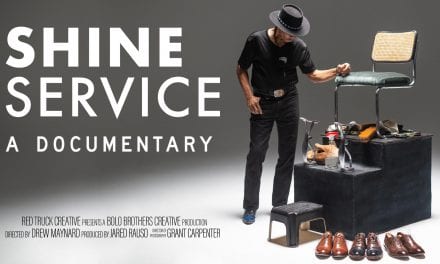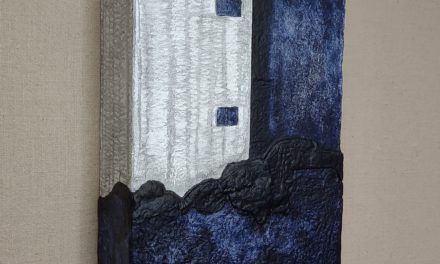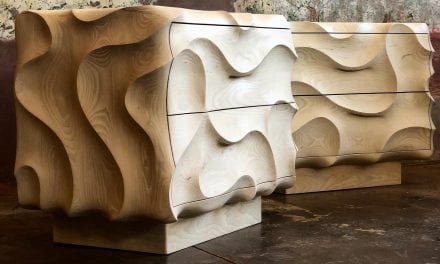Once upon a time, there was a little boy who became enchanted with the Lincoln Park Carousel. He appreciated everything about the carousel’s 48 horses. He loved everything, from each horse’s unique glass eyes to the hand-painted details of the 34 columns and scenes, every one a different adventure.
That little boy grew up to be Ken Means, a master woodcarver, painter, and bronze artist. And though he couldn’t know it at the time, his love for that carousel would introduce him to the world of fine art. “It was an amazing carousel… I loved that thing,” Ken tells Launch Engine. Recalling his memories from when he was eight years old, Ken (now 80) can still picture the carousel vividly.
Sadly, the Lincoln Park carousel that was part of Ken’s childhood was destroyed in a fire. But its status as a treasured American amusement gave Ken a lasting appreciation for the arts. It also inspired him to use his talents to bring a functional carousel to Franklin.
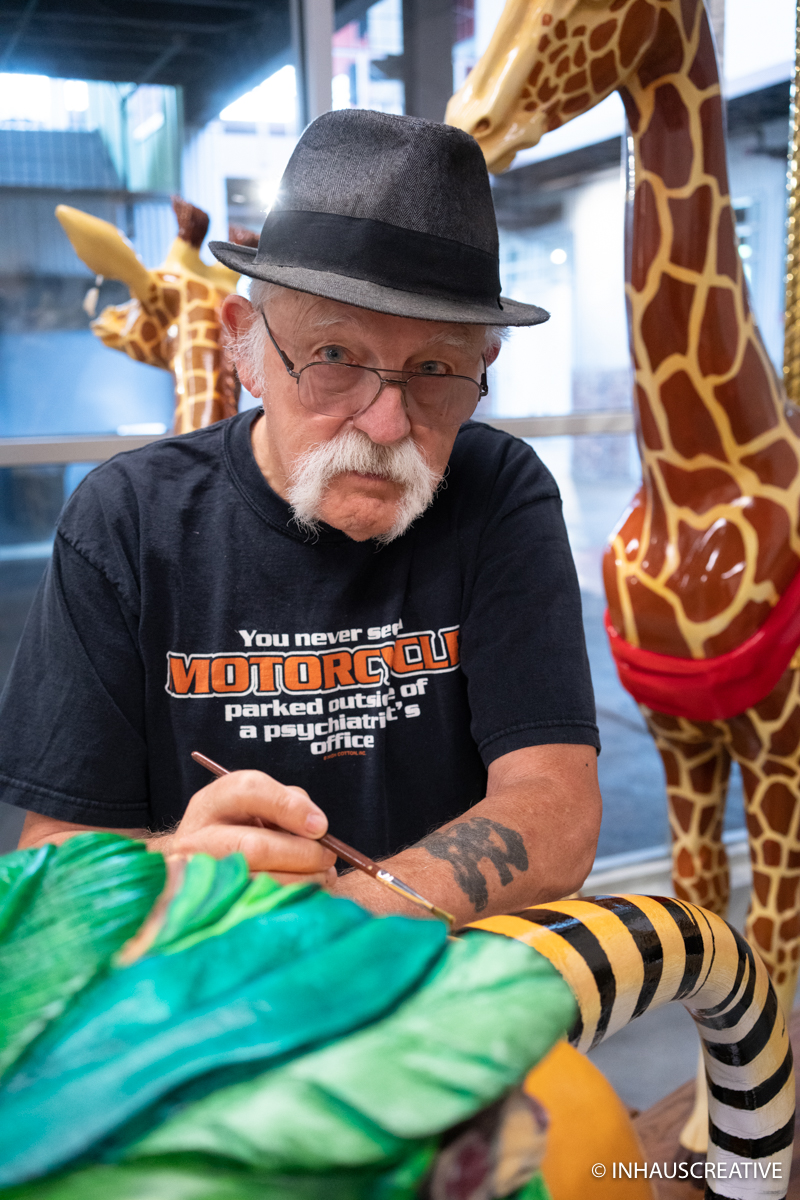
Ken, along with his wife Betty, relocated from Oregon to Franklin, TN after one of his daughters arranged for the rental of studio space in The Factory at Franklin. At the front of the mall, shoppers can see Ken and Betty hard at work in the Ken Means Carousel Menagerie workshop.
Ken’s artistic background is too vast to cover fully in one article. In fact, he jokes that his complete biography would be about five pages long. However, we can state that it begins in the early 1960s, with achievements like painting backdrops for films like “The Sand Pebbles,” and day-to-day efforts making sets for the Pasadena Playhouse. His painting work has also included billboard murals, with some stretching up to 50 feet long. He also painted the backdrop for the Hollywood Wax Museum’s “Dracula” exhibit.
“A lot of that stuff isn’t done any longer,” Ken says. “They don’t… hand-paint scenes in Hollywood anymore. It’s all photographic. I mean, you’ll have things as big as a wall, and it’s a photograph.”
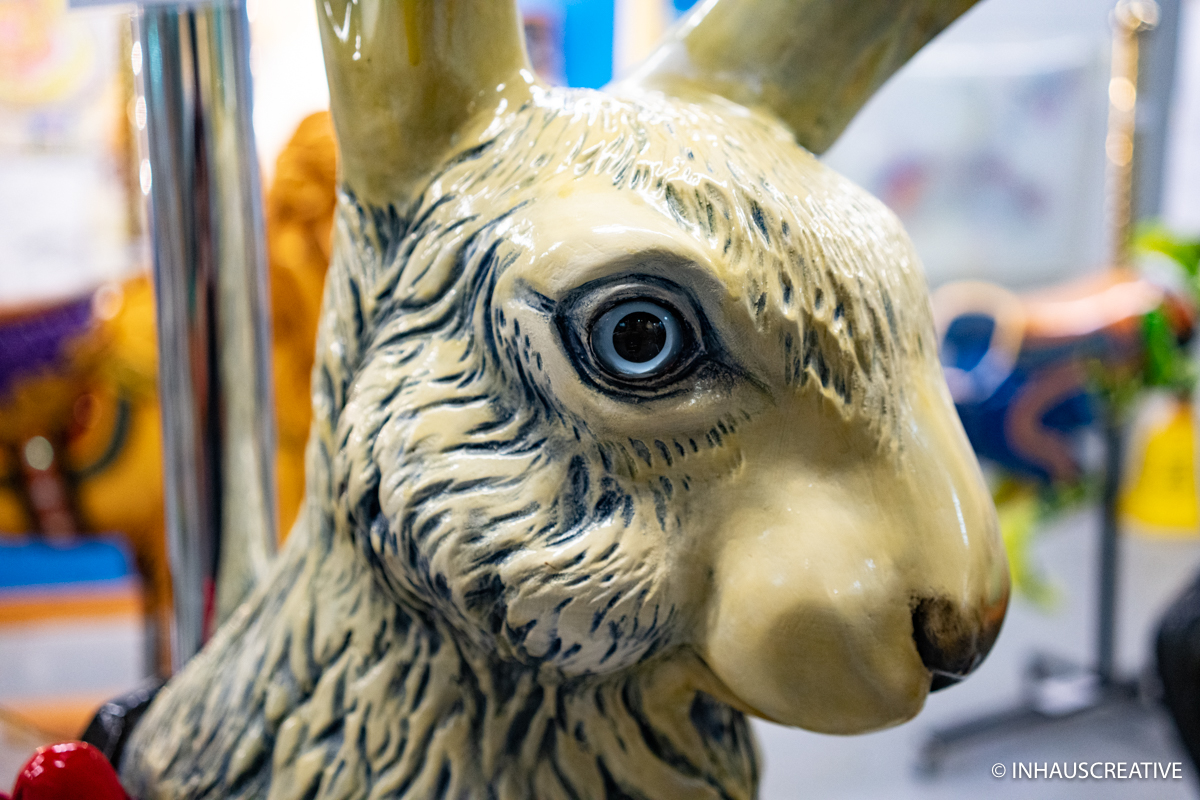
However, the Fates had more in store for Ken Means and their plans included painted horses!
“Where I really got started… I made a rocking horse for my daughters when they were little.” Ken shares that his decision to use his talents as an artist came when his wife asked him to carve a rocking horse for their children for Christmas. “I started on Thanksgiving weekend to build a rocking horse for the kids, and it was ready Christmas morning.”
Ken recalls that the rocking horses were “one of my more successful endeavors,” and tells a story of a museum exhibition of his work that featured 14 rocking horses—many carved by Ken’s students—and none of them were created with the same design! Ken shares that the show was both personally rewarding for him and was well-received by the audience. He adds that those rocking horses are still in existence, and that they’re prized possessions of his now-adult daughters who let Ken’s grandchildren play on them.
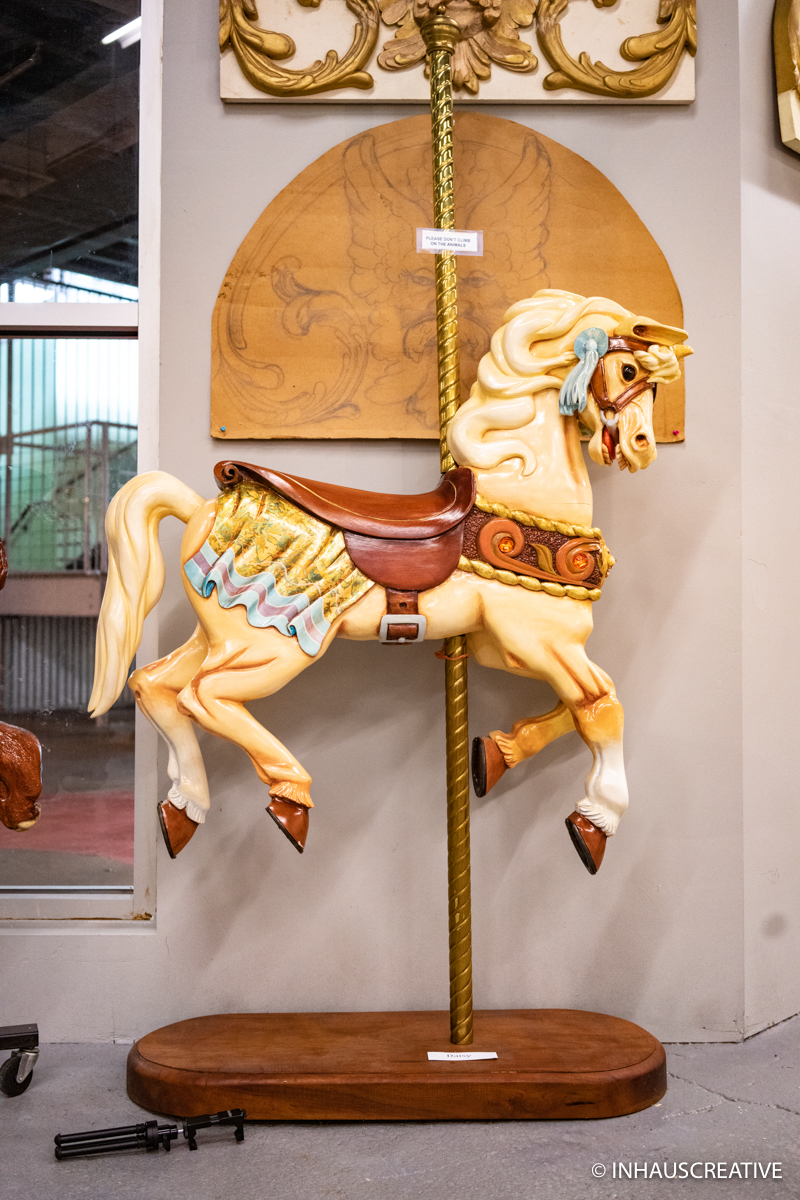
“We had a dentist who I did a piece for. I would trade work for work. Instead of paying him, I carved him a horse.” Ken’s work attitude of “You have to do what you have to do,” was actually able to get him free dental work until he moved from California to Oregon. Ken says, “The crux of the story is when the dentist’s daughters grew up and went off to college, and one of his daughters was getting married, he called me up and he said, ‘Ken, I know you’re gonna be mad at me, but can you fix my horse?’ The kids had used it so much, it had crayon marks and a broken ear, and it was all really, really well, well used. And I was just elated. I said, ‘Of course, I’ll fix it for you.’”
For Ken, it was about bringing that same level of love to other people that he experienced when he was a child. “That’s what it’s for!” Ken explains. Then pointing to one of the carousel animals, he continues, “That’s what these are for! People say, ‘Well you’re not gonna let kids on these,’ and I say, ‘Of course, I’m gonna let them on it.’”
Ken wanted to pick something that would endure the test of time. He realized that making a carousel is something only a handful of people have been able to do. With this in mind, he seized the opportunity to achieve his desire to bring happiness and wonder to the young and old alike. Ken says, “I probably have 12 to 15 paintings that are in progress right now that I’ll probably never finish.” He shares that, despite having his own foundry, he also has bronze sculpture projects that he might never get around to completing.
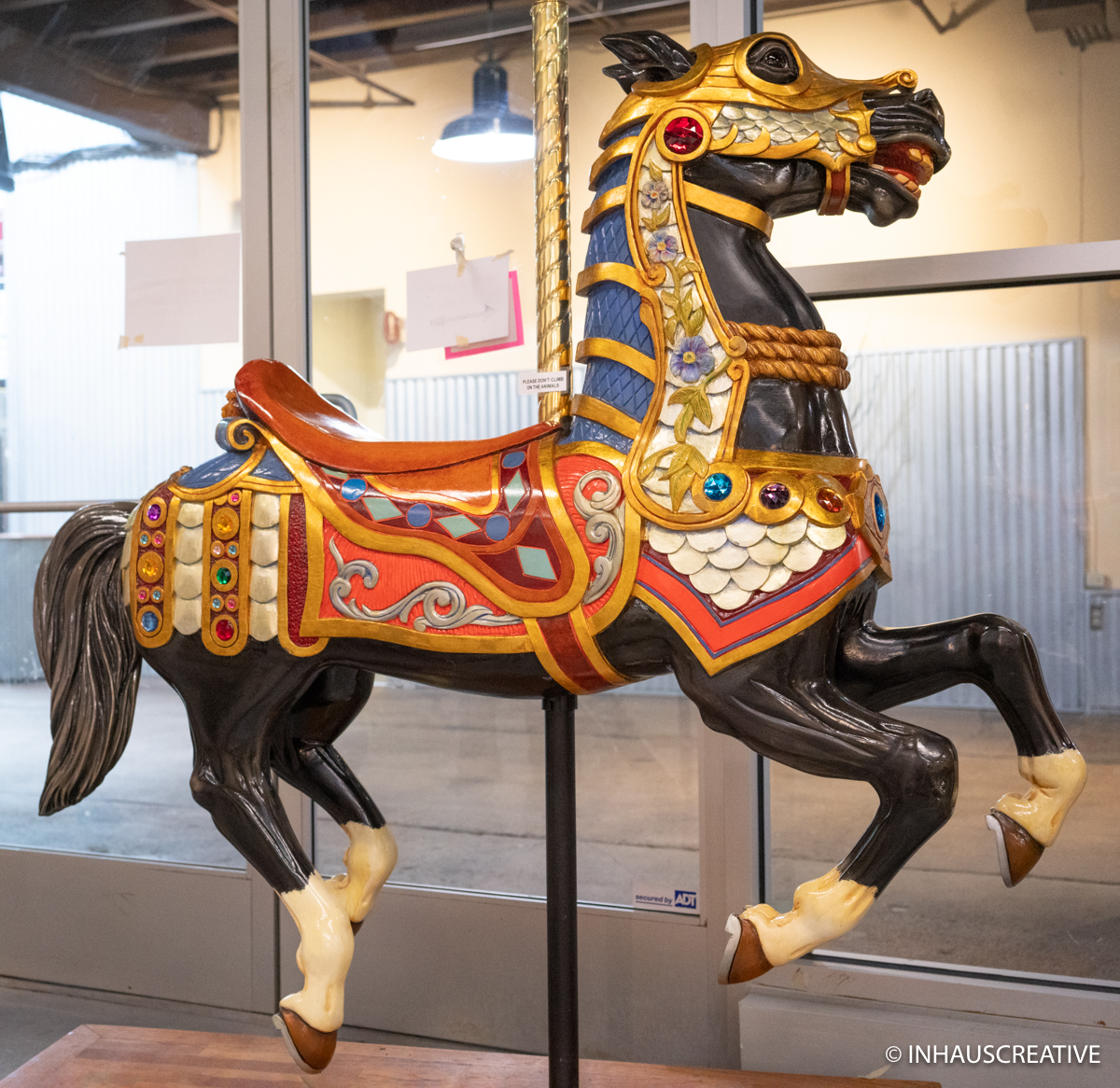
For the carousel maker wanting to share his experiences with Franklin, it’s also a matter of personal fulfillment. He observes that, over the course of his career as an artist, he’s racked his brain over what legacy he would leave behind. That joy he experienced as a child riding a carousel might not be something that the average child gets to experience. Ken wants children of today to experience the same joy he felt as a child.
Ken adds that the carousel animals are a lot sturdier than they look, and that, if taken care of, “they’ll last a hundred years.” He jokes, “You may break a leg of the animal, but we’ll just fix it, that’s all!”
Ken and Betty plan on making a total of 32 carousel animals, including many different horses and a menagerie of other creatures. This will include 11 stationary animals (called “standers”), 20 animals that go up and down on the platform (called “jumpers”), and two chariots, with one being compatible with a wheelchair. The carousel will also feature music from a band organ that can play the sounds of various instruments.
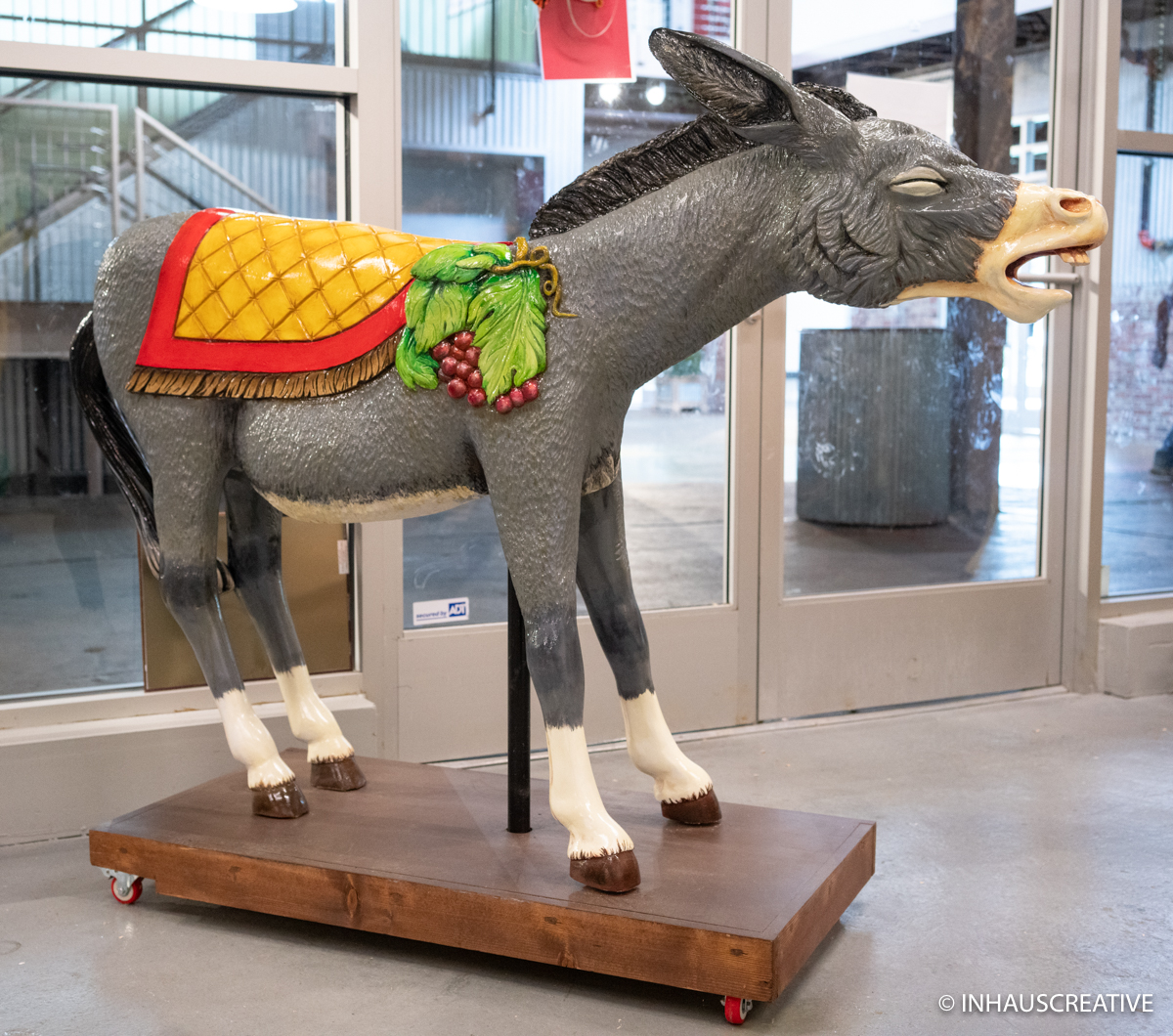
Ken points to the “‘Jack’ the Rabbit” carousel animal carved by Betty with Ken’s instruction and finishing touches. “The basic design is a Dentzel.” Gustav Dentzel (born around 1844-1909) was a famous woodcarver from the 1800s. Ken explains that the rabbits designed by the famous wood-carver actually started the whole American carousel tradition and that the rabbit was designed by Ken with his wife’s input on her interpretation of the rabbit she wanted. In the spirit of that style, Betty’s rabbit was made with visual changes and adjustments to proportions—most notably the face—to make it her own.
Ken’s interest in theater and film becomes apparent when you see the careful detail of his carousel animals. It’s not the stories delivered by those vehicles, but the wonder achieved when every element of the artwork is brought to its best level. That little pocket of reality is meant to be a sensory experience that offers new sights, sounds, and feelings (speaking in terms of tactile and emotional experiences), so that every visit to the carousel will give someone a new thing to appreciate. Ken has added many little details, like a clown or Mr. Punch on the back of the animals. He has also taken the time to fill out their rich textures and decorate them with lustrous paint jobs.
Ken makes the carousel experience unique for all of the children who will ride it. One way he accomplishes this is that he gives each animal two different sides. This was done so that the animals may be appreciated from both the outside and the inside of the carousel. Regardless of where one may be on the carousel, the storybook aesthetic of the animals feels almost like their own myth or fairytale. While one or two of the names might be from familiar stories, all of the character designs are concepts cooked up by Ken.
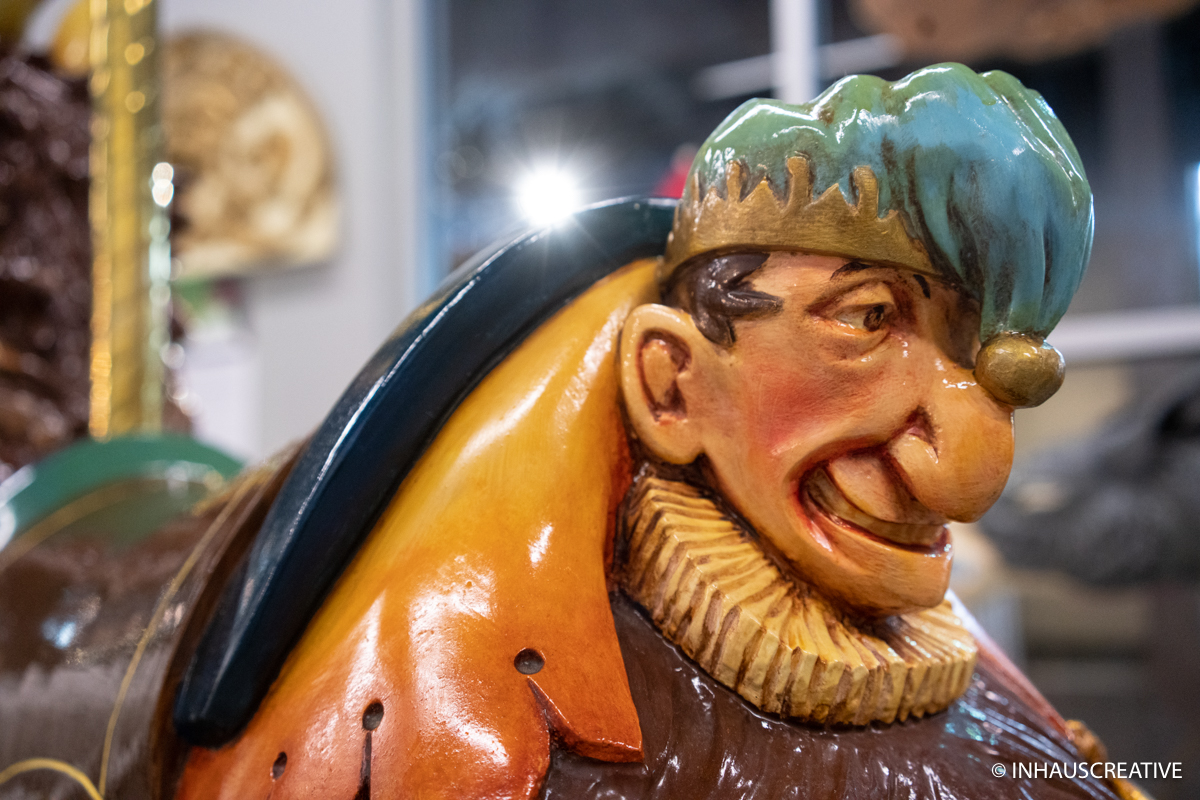
But each carousel animal is more than just a ride or a part of a splendid visual display. Ken speaks of his carved animals, saying, “All of these have time capsules.”
The idea for adding a time capsule to the carousel animals came to him as he would open up other carousel animals to repair them. “The few that I’ve opened up to restore, there’s nothing there,” he explained, disappointed. He says that he found a ¢5 ticket for a ride in one of them.
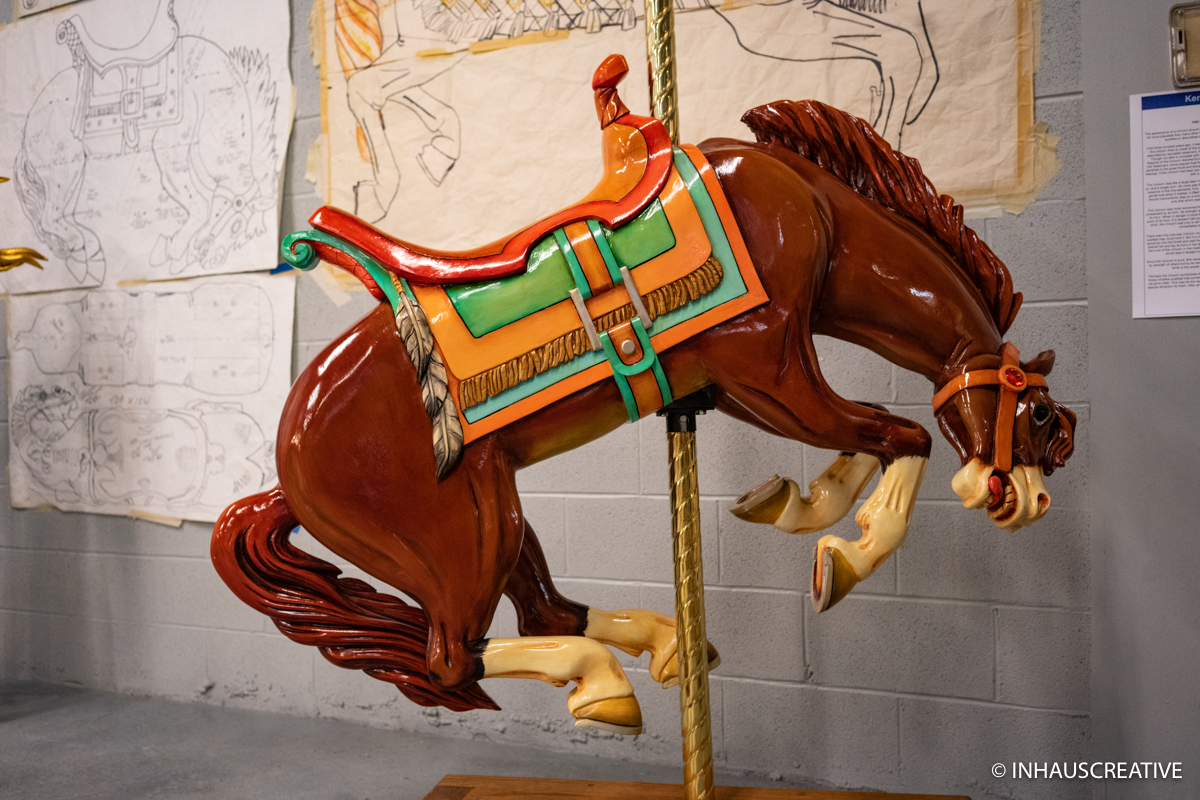
Ken says that every single carousel animal he has carved has a time capsule in it with something unique inside. He says, “Sometimes it’s letters, sometimes it’s newspaper articles. It all depends on what’s going on at the time.” He also explains that the idea of hiding time capsules in wood art is something that he advocated during his days teaching the art of woodcarving. He says, “All of my students, I don’t know if they actually did it, but I encouraged all of them to do the same thing.”
To clarify, the students to whom Ken is referring are students of his carousel carving school where he taught for 24 years. It should be noted that Ken’s efforts as a teacher include educating indigenous children about historic art styles. Some samples of his work can be seen in his shop, and include a removable rattle of a character used in Native American folk storytelling.
“I have no degrees,” Ken shares. “I’m all self-taught. But Ken got his teaching credentials right after California’s Governor Edmund G. “Pat” Brown enacted legislation to make professionals in different industries viable candidates for teaching. Governor Brown’s philosophy was that a lot of people go to school, come out of school, and then become teachers, despite having never made a living at doing their craft.

Being without fear of being a failure is what made him a master woodcarver. When asked, “Is experience the best teacher?” Ken jokes, saying, “Oh yeah. I think so. That’s how I learned everything that I know, which is not a lot.”
The Ken Means Carousel Project has a few more animals to go before it’s complete. While he continues to work, Ken is also considering opening a woodcarving school, pending on the number of students interested in taking classes.
For further information about the Ken Means Carousel Project, be sure to visit his website or follow his Facebook and Instagram pages for updates. Those interested in Ken’s woodcarving lessons are encouraged to reach out to him via kenmeanscarousel@gmail.com.

